Task chaining ABA techniques are fantastic tools that empower children's learning! By breaking down complex skills into manageable steps, these techniques help enhance their independence and confidence. For instance, methods like total task presentation, backward chaining, and forward chaining make skill acquisition feel more structured and approachable. Plus, with active caregiver involvement, children with autism can experience improved educational outcomes. Let’s explore this together! 🌟
Task chaining techniques have emerged as a transformative approach in ABA therapy, especially for children on the autism spectrum. By breaking down complex tasks into manageable steps, these methods not only enhance skill acquisition but also foster independence and build confidence in young learners. But here's the question: how can caregivers effectively weave these strategies into daily routines to truly maximize their child's learning potential?
In this article, we’ll explore seven innovative task chaining techniques that empower children. We’re excited to share insights and practical applications that can help both parents and educators alike. Let’s dive in and discover how these techniques can make a difference together!
At Rori Care - ABA Therapy, we understand the unique challenges that parents face when supporting their children with autism. That's why we employ customized sequence strategies designed to significantly enhance educational outcomes for kids. Our certified behavior analysts conduct thorough assessments to evaluate each child's distinct strengths and challenges. This helps us create tailored strategies for task chaining aba therapy that incorporate effective chaining techniques.
This personalized approach not only assists young learners in mastering complex skills but also nurtures their independence and builds confidence throughout their educational journey. By breaking activities into manageable steps and using visual tools and straightforward guidelines, children encounter a clear path to success, enhancing their overall growth and independence.
As we develop each program, we set measurable objectives and utilize evidence-based strategies to ensure that every plan adapts to the evolving needs of the child. Consistent progress monitoring through data collection is key to assessing success and identifying areas that may need adjustments in the overall task chaining aba process. One clinician beautifully expressed, 'Each step completed successfully gives individuals a sense of accomplishment, boosting self-esteem and promoting autonomy.'
This organized method, based on the principles of Applied Behavior Analysis and task chaining aba, guarantees that young individuals receive the tailored support they need to thrive. Let’s explore this journey together, ensuring every child has the opportunity to succeed!

Total assignment presentation is such a great teaching strategy! It involves presenting all steps of an activity at once, which is especially helpful for young learners who thrive when they can see the whole picture of their learning process. Imagine guiding a young learner to make a sandwich—by walking them through each step, from gathering ingredients to assembling their creation, they can truly engage with the entire process in one go. This thorough approach not only helps develop their skills but also builds their confidence as they see their progress in completing the whole activity.
Research shows that this method can really improve educational outcomes by reducing anxiety and promoting independence. When kids can grasp the full scope of what they're learning, they feel more empowered. By utilizing task chaining aba to integrate multi-step activities into ABA therapy, practitioners can keep a close eye on progress and adjust strategies, ensuring that each child’s unique needs are met. Total assignment presentation beautifully illustrates how organized education and task chaining aba can empower individuals with autism, helping them tackle complex skills with greater ease and confidence.
Active involvement from caregivers, supported by education in ABA principles and strategies, really boosts the effectiveness of these methods. Caregivers who are informed can make choices that positively influence their child's progress, leading to better behavioral outcomes and a happier family dynamic—yes, even less stress! As ABA therapists often say, task chaining aba helps by breaking activities down into manageable steps, which not only clarifies how to do them but also significantly lessens anxiety. This way, learners can confidently take on new challenges. Let’s explore this together!
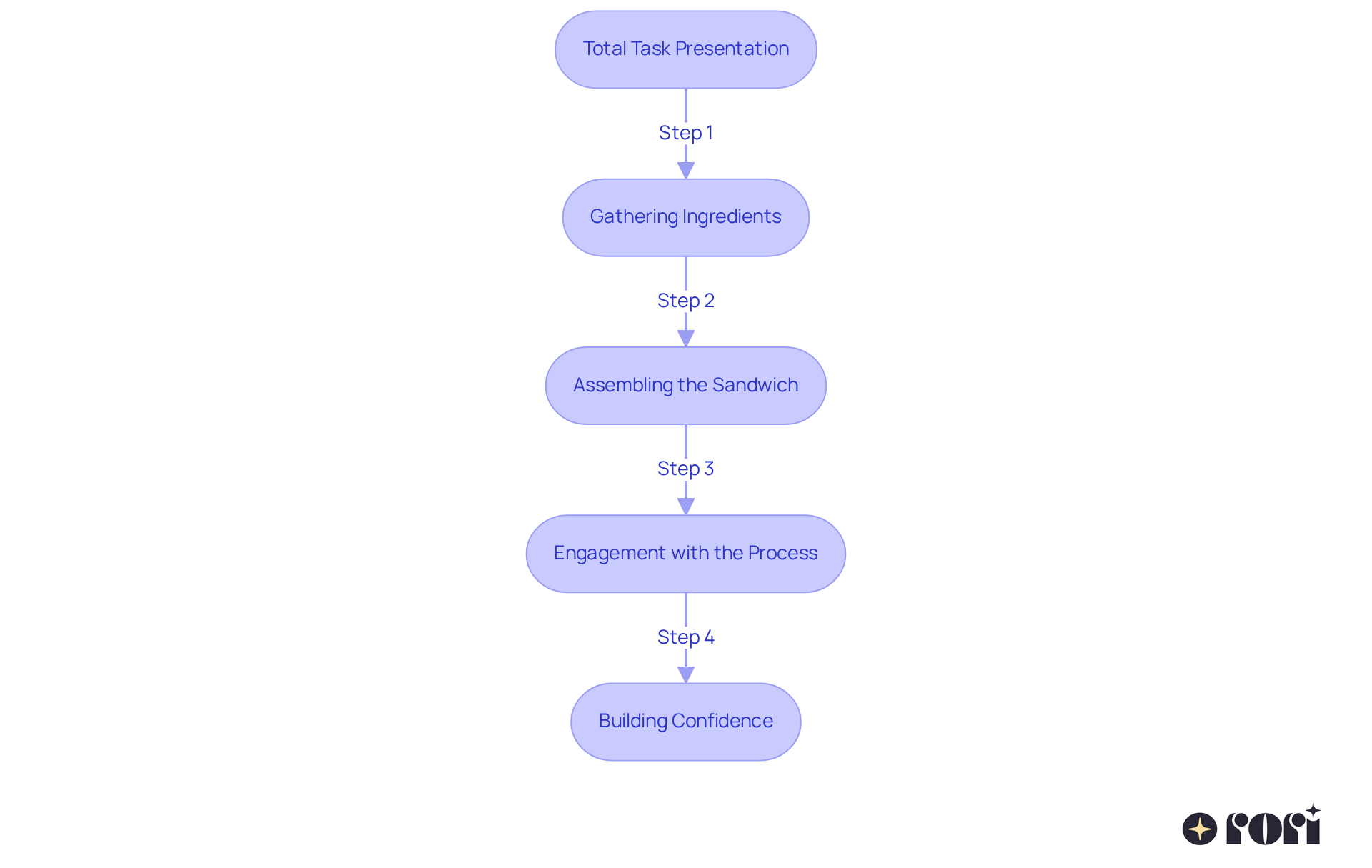
Backward chaining is such a fantastic method! It starts with teaching the final step of an activity first, which lets kids experience success right away. For example, when helping a child learn to put on a jacket, a clinician might begin by guiding them to zip it up. From there, they can gradually assist the child in placing their arms through the sleeves. This approach not only reinforces that last step but also boosts the child's confidence as they see themselves completing the task. By keeping the end goal in sight, children often stay more motivated and engaged throughout the learning journey.
But the benefits of backward chaining go beyond just that initial success. It breaks down activities into smaller, manageable parts, making it easier for kids to tackle complex tasks. When they can first master that final step, it acts as a motivational anchor. This method has proven especially effective for children on the autism spectrum, as it aligns beautifully with their learning styles and needs.
There are so many success stories that highlight the positive effects of backward chaining on skill development. Take, for instance, children who have struggled with self-care tasks like brushing their teeth or getting dressed. They often show remarkable progress when using this method! Behavioral analysts point out that backward chaining not only enhances educational outcomes but also nurtures independence and self-confidence in young learners.
As one expert noted, backward sequencing is particularly motivating because it allows kids to experience quick wins, which can really elevate their confidence. By using backward sequencing, parents and therapists can create a supportive learning environment that encourages kids to take initiative and develop essential life skills.
At Rori Care, our dedicated clinical leadership team—made up of skilled professionals passionate about neurodiversity—plays a vital role in applying principles of task chaining aba, including backward chaining. They equip caregivers with tailored strategies to meet each child's unique needs, ensuring that the learning process is both effective and supportive. Plus, Applied Behavior Analysis (ABA), particularly through task chaining aba, is a personalized therapy rooted in the science of learning and behavior, designed to help young individuals achieve their behavioral goals.
Let’s explore this together! We’re here to help you every step of the way!

Forward chaining is a friendly, systematic method for teaching activities by starting with the first step and guiding the learner through each subsequent action. For example, when teaching a young person how to wash their hands, the clinician begins by helping them turn on the faucet, then wet their hands, apply soap, and so on, until they master the entire process. This approach not only clarifies the logical sequence of actions needed to achieve the goal but also reinforces learning through immediate success at each step. 😊
Research shows that young individuals who engage in forward chaining techniques experience higher skill acquisition rates. They build confidence and competence incrementally, which is fantastic! By mastering each stage, they cultivate a sense of autonomy, allowing them to take on more responsibility in completing tasks. Clinicians at Rori Care, who are passionate about neurodiversity and supporting young individuals, have noticed that this step-by-step learning method significantly improves task completion rates among those with autism, boosting both motivation and self-sufficiency.
As one clinician shared, 'Forward chaining enables young individuals by allowing them to achieve success at each stage, which is essential for their overall development.' This approach aligns beautifully with the principles of Applied Behavior Analysis therapy, emphasizing the importance of task chaining aba and active caregiver involvement in supporting youth behavioral goals through data collection and consistent practice. Let’s explore this together and see how it can make a difference for your child!
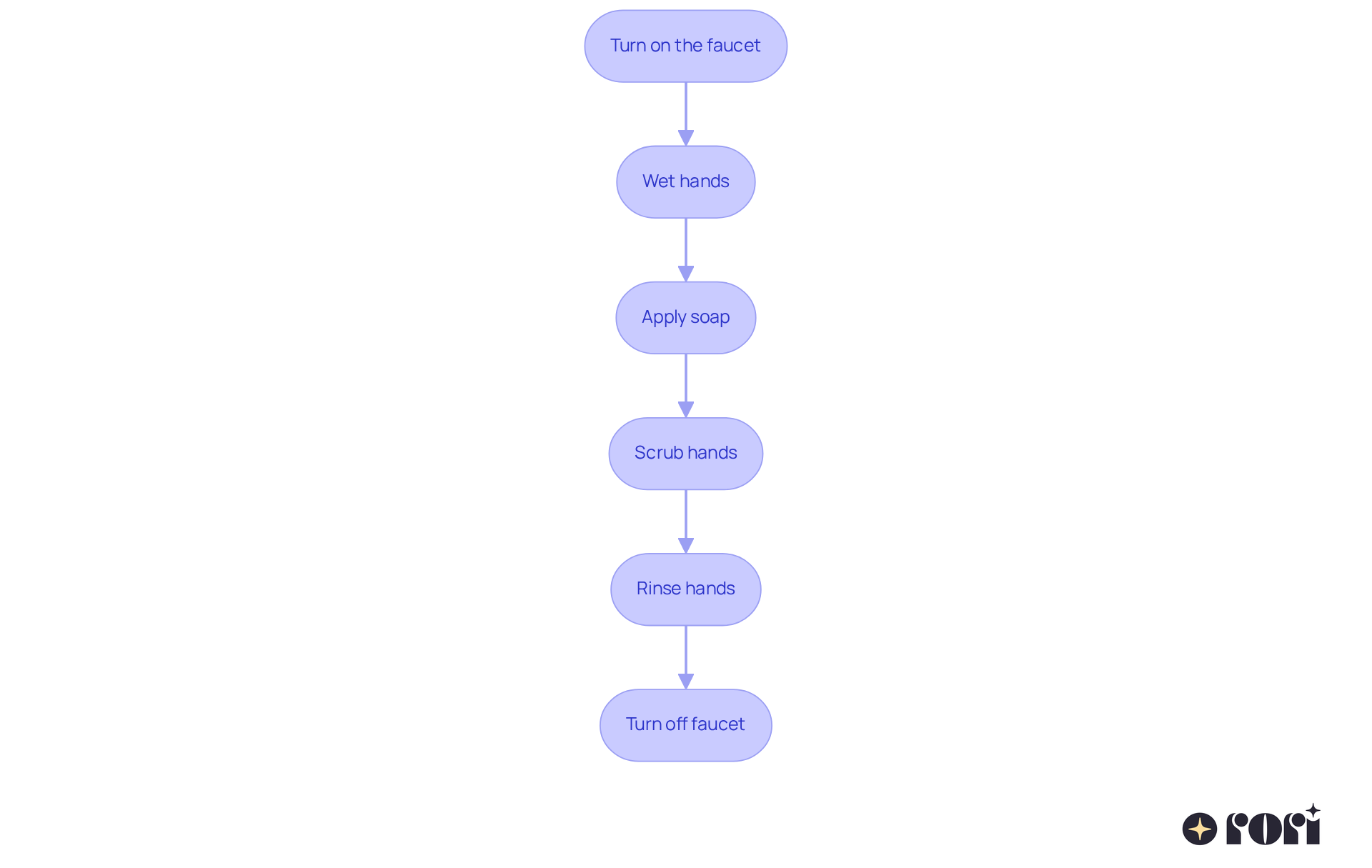
Activity analysis is a structured approach used in task chaining ABA therapy that helps break down complex activities into smaller, manageable steps. This showcases the individualized nature of ABA, which adapts to each person's unique needs. By using this method, therapists can identify the specific actions needed for task chaining ABA, which makes learning a lot easier for young learners. For instance, when teaching a child to tie their shoes, the clinician would split the process into clear steps: holding the laces, crossing them, and forming a loop. By focusing on one step at a time, kids can master each element before moving on, significantly boosting their overall success in learning new skills.
Research shows that activity analysis methods can lead to increased skill mastery rates. Studies indicate that young individuals participating in structured education through activity analysis experience enhanced outcomes across various areas, including communication and daily living skills. This organized approach not only reduces feelings of being overwhelmed but also fosters independence, as children learn to manage activities with confidence through task chaining ABA.
Therapists often highlight the benefits of breaking activities down, noting that this strategy allows for clearer goals and encourages active involvement. Effective uses of activity analysis and task chaining ABA have been observed in teaching complex skills, like setting a table or joining in conversations, where each skill is divided into manageable steps. This gradual educational method helps individuals with autism achieve their goals and supports their overall development.
To bring task analysis into your home, parents can begin by identifying a specific skill their child needs to learn. Break it down into clear, sequential steps, and practice each step individually until mastery is reached. By actively participating in this process, caregivers not only aid their child's education but also build confidence in their ability to make informed choices that positively impact their child's development. This involvement is essential, as it leads to better behavioral outcomes and a more supportive home environment.

Task linking methods can easily fit into your daily routine, creating wonderful learning opportunities for kids while giving caregivers essential ABA principles. For example, when teaching a little one to brush their teeth, parents can guide them through each step:
This approach not only reinforces learning in a familiar setting but also helps kids generalize skills across different environments, ensuring consistent support at home.
Research shows that kids who engage in early intervention programs, often involving task chaining ABA, see significant boosts in their cognitive and adaptive skills. In fact, 50-75% of children who undergo intensive Applied Behavior Analysis (ABA) therapy for two or more years make noticeable progress. Plus, those who start early intervention before age three enjoy an average 17-point increase in IQ scores compared to those who begin later. This highlights how crucial it is for parents to make informed decisions and provide better support.
Parents can incorporate task chaining ABA into everyday activities by breaking down complex tasks into simple steps. For instance, when teaching a child to get dressed, parents can help them through each stage:
This structured method not only fosters independence but also boosts confidence as children master each step, leading to better behavioral outcomes.
Many parents have shared positive experiences with activity sequencing in their daily lives. One parent remarked, 'Using task chaining ABA for simple tasks like washing hands has made a huge difference. My child now does it independently, and it feels great to see that progress!' Such testimonials highlight how effective these techniques can be in empowering children and enhancing their learning experiences, ultimately improving family dynamics.
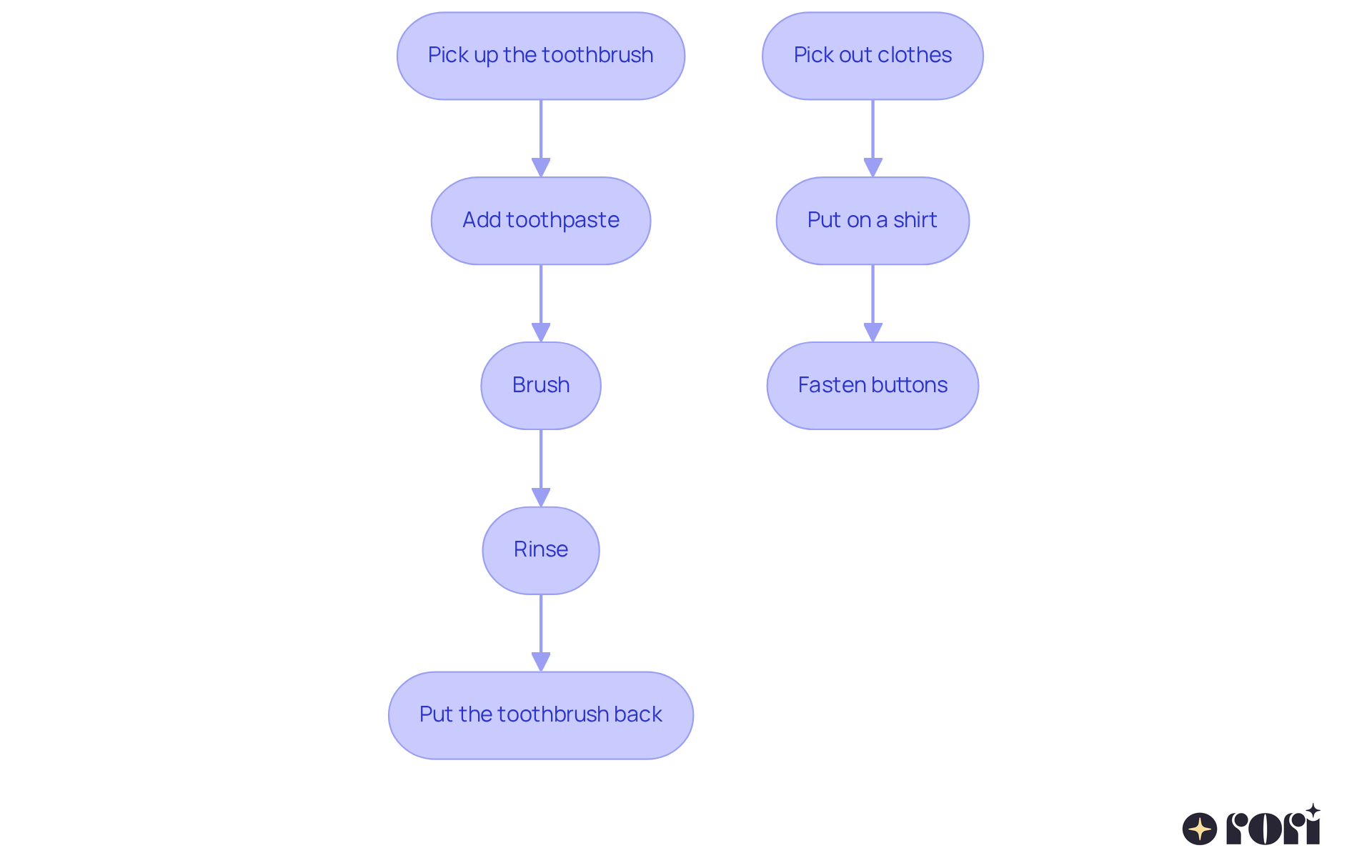
Monitoring progress is so important when it comes to using chaining techniques in ABA therapy! Clinicians really need to keep an eye on how each young person is doing to see if these techniques are helping them learn new skills. This means regularly collecting data on how well they can complete each step of task chaining aba and spotting any bumps in the road along the way.
Based on this information, it’s crucial to tweak teaching methods to boost educational outcomes. Research shows that keeping track of progress can make a huge difference in skill acquisition. In fact, studies reveal that 90% of individuals show fantastic progress when caregivers actively join in the therapy process! By focusing on assessing progress, therapists can help ensure that young learners are consistently moving forward in their educational journey, which ultimately leads to better cognitive and social functioning.
Let’s explore this together! We’re here to help you every step of the way!
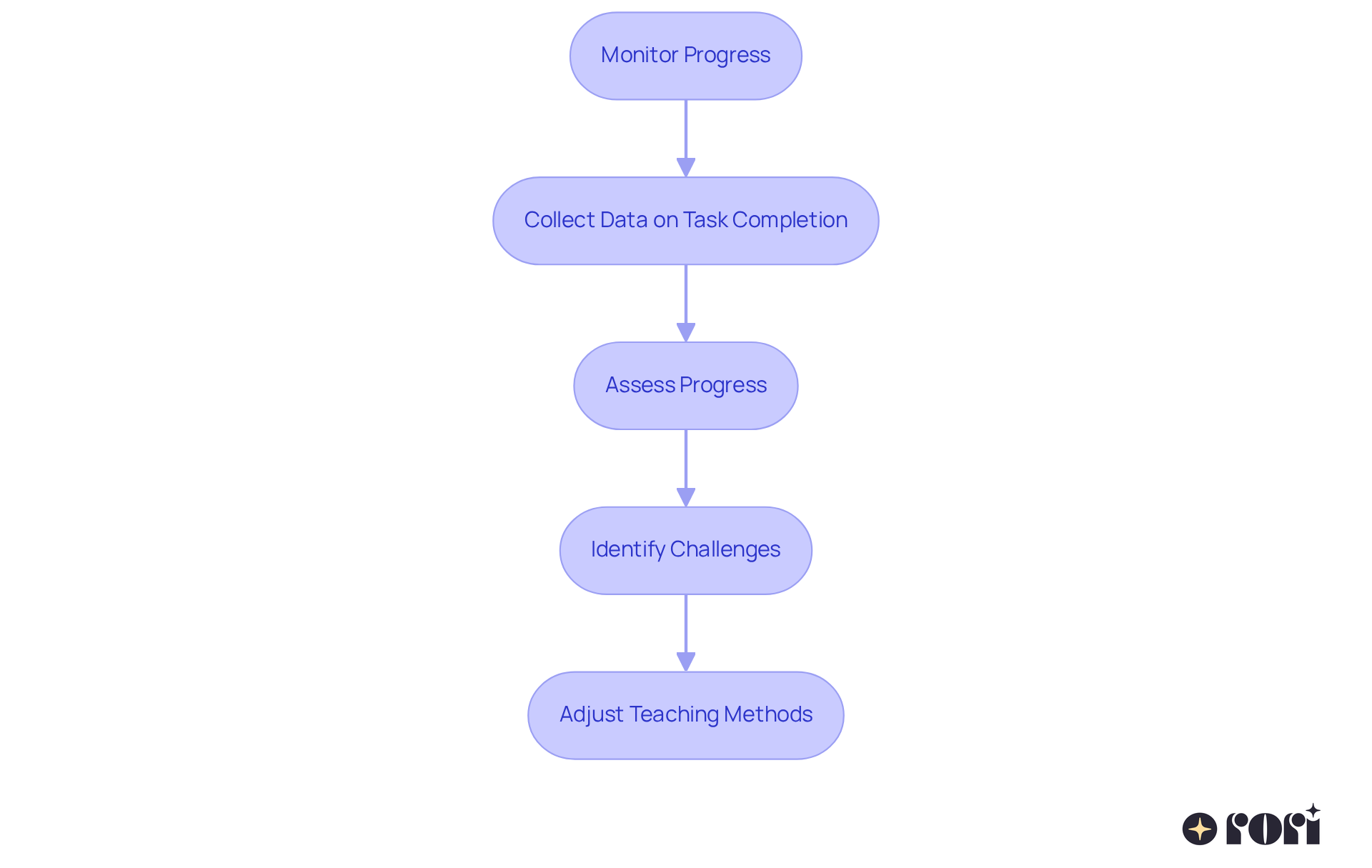
Systematic fading is such an important method in ABA therapy! It involves gradually reducing prompts and support as a young learner picks up new skills. This approach really helps promote independence, allowing young individuals to rely on their own abilities rather than outside support.
For example, think about teaching a young child to dress themselves. At first, a clinician might provide full physical support. But as the child becomes more skilled, that support is slowly reduced until they can do it all on their own. This gradual transition not only boosts the child's confidence but also strengthens their ability to perform tasks independently.
Caregivers are key players in this journey! Their active involvement and understanding of ABA principles make a big difference in how effective systematic fading can be. Research shows that this method has a significant impact on skill acquisition, helping young individuals master new abilities efficiently while fostering self-sufficiency.
Also, adaptive treatment plans based on progress reports can enhance the systematic fading process. This way, support is tailored to each child's evolving needs. Take Ethan, for instance—he started using short phrases to express his needs within just a year of ABA-based early intervention. His story is a wonderful example of the positive outcomes linked to systematic fading!
And did you know that early intervention can lead to a 70% reduction in tantrums? That really highlights how effective this technique is in promoting skill development and independence. By equipping caregivers with the knowledge and strategies they need to support their children's behavioral goals, we can make ABA therapy even more effective and create a nurturing home environment. Let’s explore this together!
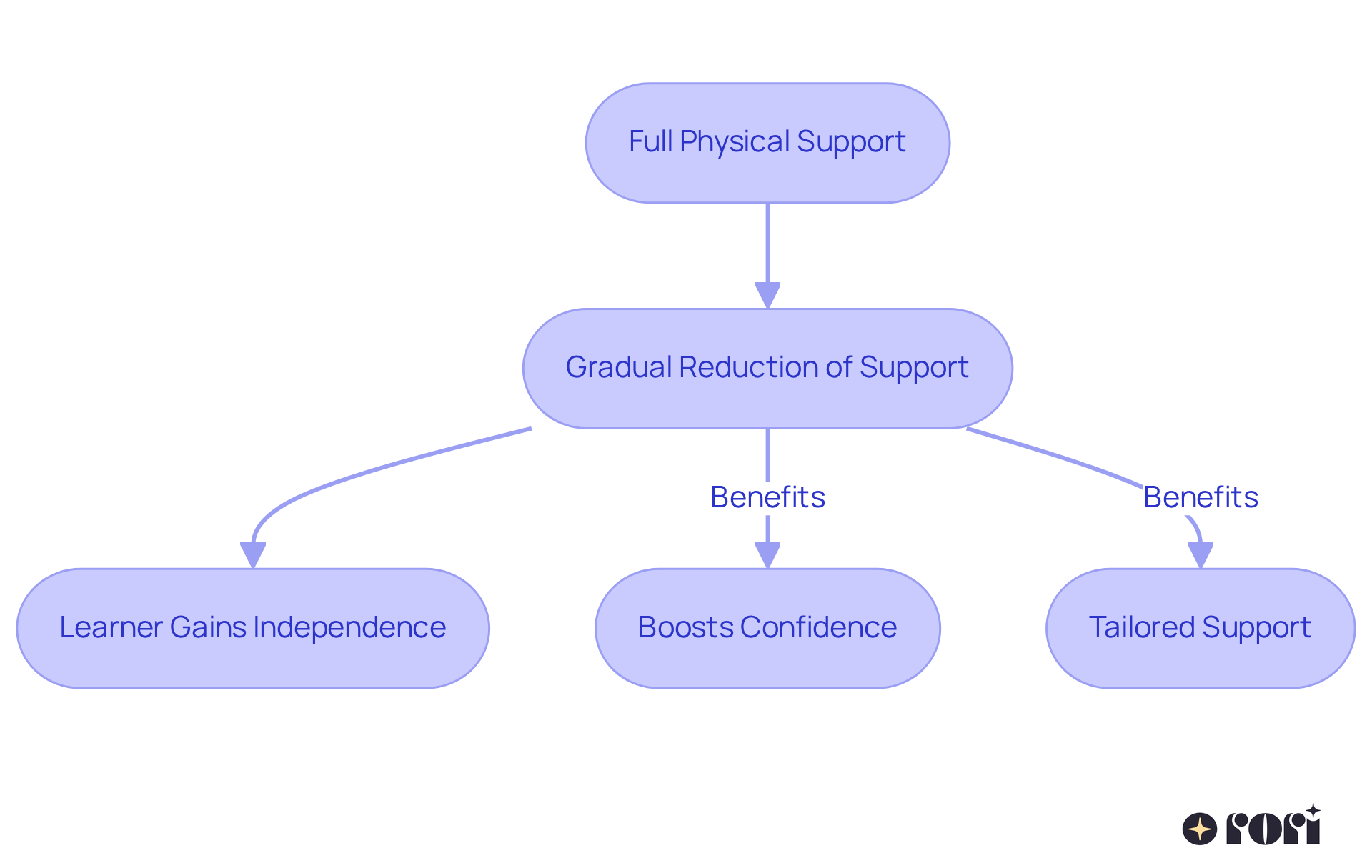
Incorporating regular review and reinforcement into a young learner's routine is so important for ensuring skill retention! 🌟 This method is all about revisiting activities they've already mastered and creating chances for practice in different situations. For instance, if your little one has learned how to wash their hands using task chaining ABA techniques, you can help reinforce this skill by encouraging them to practice consistently throughout the day.
Did you know that statistics show regular practice is vital for skill retention? In fact, 90% of young individuals show significant improvement when they engage in therapy hours with active caregiver involvement. Clinicians remind us that 'behavior is a form of communication, and we must listen,' highlighting the need for adaptable treatment plans that include ongoing practice.
By consistently reviewing and reinforcing these skills, young learners are much more likely to remember what they’ve learned and effectively use it in their daily lives. Let’s explore this together and see how we can support our little ones in their learning journey!
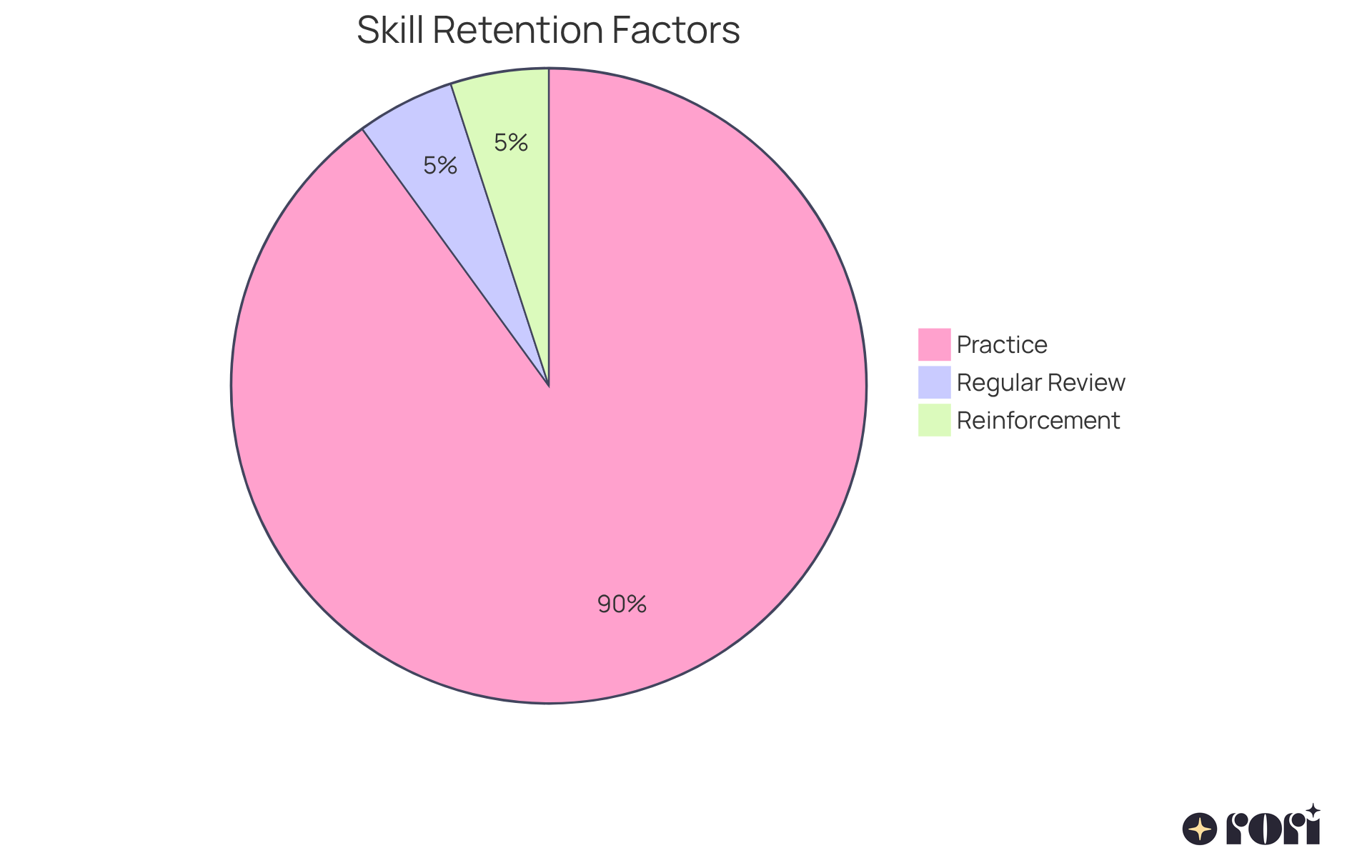
Task linking methods offer wonderful advantages for kids with autism! They help with skill acquisition, foster greater independence, and boost confidence. By breaking down complex activities into manageable steps, young learners can progress at their own pace and celebrate their successes along the way.
Imagine how encouraging it is for children to feel that sense of achievement as they master each phase. This ultimately leads to increased autonomy in everyday tasks. Rori Care's clinical leadership emphasizes the importance of caregiver involvement in this process. Active participation and data collection are key to customizing these techniques to fit each child's unique needs.
Behavioral analysts at Rori Care point out that continually evaluating and modifying activity sequencing strategies can significantly enhance behavioral outcomes. So, how can you start implementing task chaining techniques? Begin by identifying a daily task your child finds challenging. Break it down into smaller, manageable steps using task chaining aba, and provide support and encouragement as they progress. Let’s explore this together!
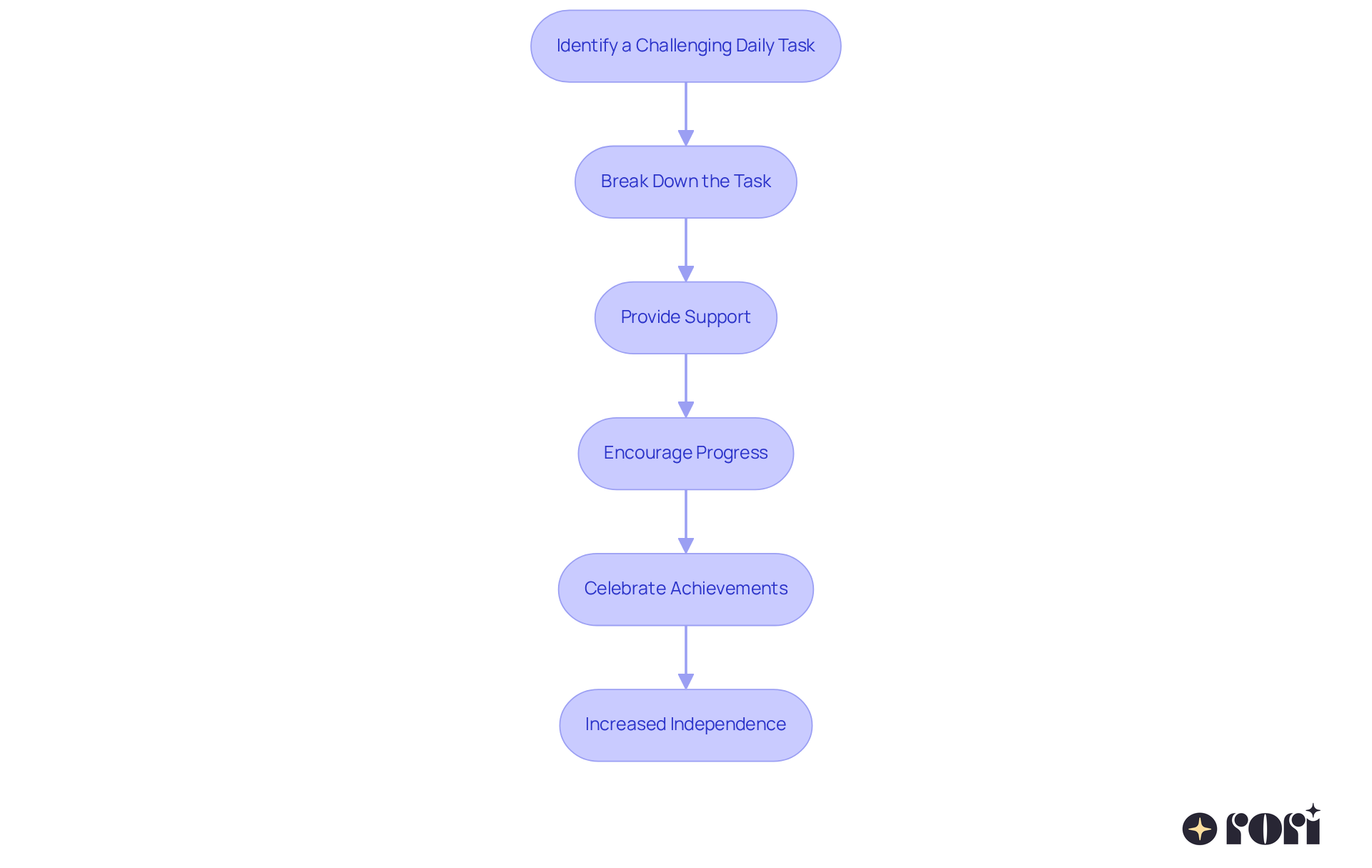
Task chaining ABA techniques offer a transformative way to enhance the learning experience for children with autism. By breaking down complex activities into manageable steps, these strategies empower young learners to gain independence and build confidence in their abilities. The personalized nature of task chaining ensures that each child receives the tailored support they need to thrive, making this method an essential part of effective ABA therapy.
Throughout the article, we explored several key techniques, including:
Each method uniquely contributes to skill acquisition and independence by providing structured, step-by-step guidance. Plus, when caregivers actively get involved, it amplifies the effectiveness of these techniques, creating a supportive environment that encourages children to take initiative and develop essential life skills.
Incorporating task chaining techniques into daily routines not only boosts learning outcomes but also strengthens family dynamics. As caregivers participate in their child's learning journey, they see firsthand the positive impact of these strategies. Embracing task chaining ABA techniques can lead to significant improvements in cognitive and adaptive skills, paving the way for a brighter future. Engaging with these methods today can create lasting benefits for children and their families, fostering a sense of accomplishment and independence that will serve them well in all aspects of life. Let’s explore this together and witness the wonderful changes it can bring!
What is Rori Care - ABA Therapy?
Rori Care - ABA Therapy specializes in providing personalized ABA therapy for children with autism, focusing on customized sequence strategies to enhance educational outcomes.
How does Rori Care assess each child's needs?
Certified behavior analysts conduct thorough assessments to evaluate each child's unique strengths and challenges, allowing for the creation of tailored strategies for task chaining ABA therapy.
What is task chaining ABA therapy?
Task chaining ABA therapy involves breaking activities into manageable steps and using visual tools and straightforward guidelines to help children master complex skills, fostering independence and confidence.
How does Rori Care ensure the effectiveness of their programs?
Rori Care sets measurable objectives and utilizes evidence-based strategies, along with consistent progress monitoring through data collection, to adapt each plan to the evolving needs of the child.
What is total task presentation, and how does it benefit young learners?
Total task presentation involves presenting all steps of an activity at once, helping young learners see the whole picture of their learning process, which reduces anxiety and promotes independence.
How does task chaining ABA integrate multi-step activities into therapy?
Task chaining ABA allows practitioners to monitor progress closely and adjust strategies, ensuring that each child’s unique needs are met while helping them tackle complex skills with greater ease.
What is backward chaining, and how does it work?
Backward chaining is a method that starts by teaching the final step of an activity first, allowing children to experience success immediately, which boosts their motivation and engagement.
What are the benefits of backward chaining for children with autism?
Backward chaining breaks down activities into smaller parts, making complex tasks easier to tackle, and it has been shown to enhance educational outcomes while nurturing independence and self-confidence.
How does Rori Care support caregivers in the learning process?
Rori Care provides caregivers with tailored strategies and education in ABA principles, which empowers them to positively influence their child's progress and leads to better behavioral outcomes.
What is the overall goal of Rori Care's approach to ABA therapy?
The overall goal is to provide personalized support that helps young individuals thrive, ensuring they have the opportunity to succeed in their educational journey.